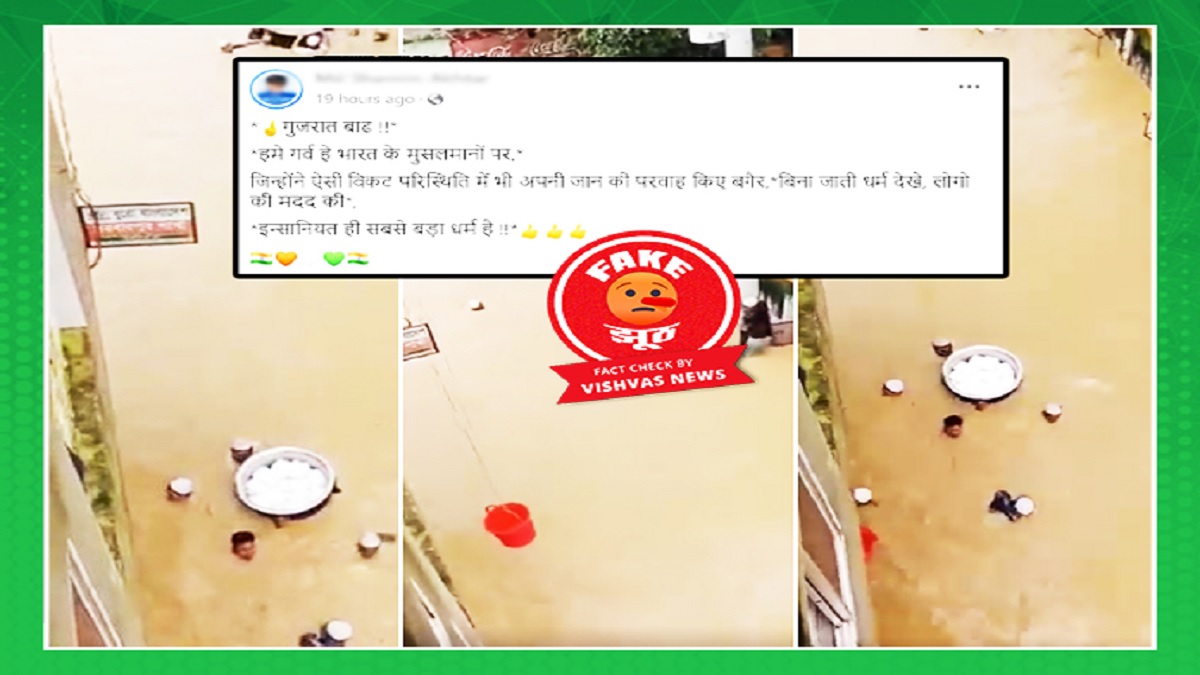The recent heavy rains and flooding in Gujarat have caused widespread disruptions, prompting a surge in misinformation online. A video depicting students rescuing flood victims has been circulating on social media with claims that it portrays the current situation in Gujarat. However, investigations have revealed that the video originated from Bangladesh, highlighting the challenges of combating misinformation during disaster situations.
The Viral Video and Misleading Claims
The video, which gained significant traction on social media, shows individuals, presumably students, navigating floodwaters and assisting people in distress. This footage was widely shared with captions indicating its origin in Gujarat and linking it to the ongoing flood crisis in the state. The emotional impact of the video, coupled with the sensitivity of the situation, contributed to its rapid dissemination, emphasizing the power of visual content in spreading information – accurate or otherwise.
Investigating the Video’s Origin: Unveiling the Truth
To verify the claims associated with the video, fact-checking organizations employed reverse image searches using keyframes extracted from the footage. This led to the identification of the video on the Facebook account of a Bangladeshi user named MH Fahad Mondol, where it was uploaded on August 25, 2024.
Evidence from the Video’s Source
The caption accompanying the video on the Bangladeshi user’s account provided crucial context. It was written in Bengali, explicitly stating the video’s location as Bangladesh and revealing the participants to be madrasa students assisting those affected by the floods in their area. This information, clearly evident in the original source, effectively debunks the misinformation spread regarding the video’s connection to Gujarat.
Understanding the Spread of Misinformation
The rapid dissemination of the video, despite its inaccurate claims, reflects a recurring pattern of misinformation during disaster situations. Several factors contribute to this phenomenon:
Emotional Appeals and Visual Impact
The video’s graphic imagery of individuals in distress, coupled with the sense of urgency surrounding the situation in Gujarat, appealed strongly to viewers’ emotions. This emotional resonance often overrides critical thinking and verification efforts, allowing misleading information to flourish.
Lack of Source Verification
Social media platforms, with their speed and ease of information sharing, encourage rapid sharing without adequate source verification. This tendency further exacerbates the spread of false or misleading content, making it crucial to prioritize reliable sources and cross-checking information from multiple reputable outlets.
Combatting Misinformation: Building Resilience
The spread of misinformation during disaster situations can have severe consequences. It can exacerbate anxiety, hinder relief efforts, and even lead to dangerous situations. Combatting misinformation requires a multi-pronged approach:
Fact-Checking Initiatives
Reliable fact-checking organizations play a crucial role in debunking false information and providing accurate, verified details. Their efforts involve scrutinizing content, verifying sources, and publishing transparent investigations for the public.
Social Media Literacy
Promoting social media literacy is paramount. Educating users on how to identify reliable sources, critically evaluate information, and verify content before sharing it can significantly limit the spread of misinformation.
Media Responsibility
News outlets and journalists have a responsibility to report accurately and responsibly during crises. Prioritizing verified information, avoiding sensationalism, and clearly attributing sources help foster public trust and limit the impact of misinformation.
Take Away Points
- The viral video of students rescuing flood victims originated from Bangladesh and is not from Gujarat as claimed.
- This incident highlights the challenges of combating misinformation during disaster situations, where emotions run high and the need for accurate information is crucial.
- It underscores the importance of fact-checking and source verification, particularly on social media.
- Effective communication, responsible journalism, and promoting media literacy are essential in countering the spread of misinformation and ensuring public safety and well-being during times of crisis.




